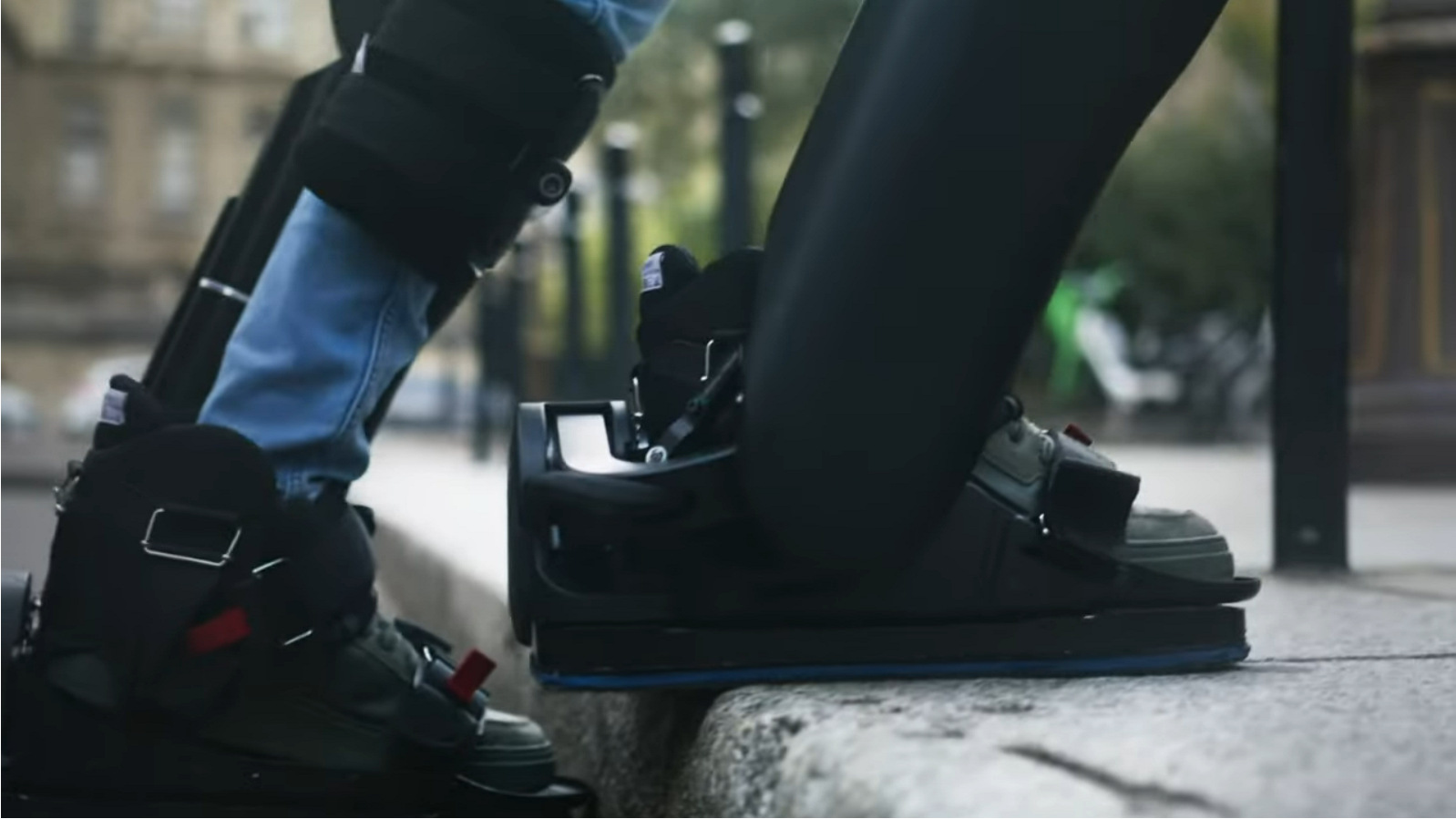A robotic guide dog helps a blind person navigate her surroundings. An exoskeleton allows a paraplegic to take steps. An individual operates a prosthetic arm with his mind. These are not scenes from a futuristic film; they are part of a new generation of robots that are transforming the lives of the disabled.
“There are people who truly need robots. If they are designed right, these devices can make these people’s lives better,” said Wasim Ahmad, a senior lecturer for Autonomous Systems and Connectivity in the James Watt School of Engineering at the University of Glasgow, Scotland.
Added Bin He, Trustee Professor for Biomedical Engineering, Electrical & Computer Engineering and director of the National Institutes of Health-funded Neural Interfacing Training Program at Carnegie Mellon University, “Robotic devices can assist in everyday life and greatly aid in patients’ independence. They can save on costs for society as well.”
Assistive robots are rapidly moving out of the lab and into everyday life. Equipped with machine vision, LiDAR, voice recognition, neuro-brain links and artificial intelligence (AI), they are taking on different shapes, forms, and functions to address the specific needs of those who lack eyesight, limbs, and various motor skills.
Beyond the Vision
Over the last quarter-century, bionic limbs and other innovations have fundamentally improved the lives of the disabled. Yet, most of these devices restore only limited functionality, and they are unable to help those with vision loss and other physical problems.
Advancements in sensors, mechanical systems, and AI are fundamentally changing the landscape, however. Emerging exoskeletons and prosthetics allow paraplegics to walk; smart wheelchairs can detect objects to avoid and navigate to a desired location; and robots can aid in dressing and handling household tasks.
A robotic guide dog developed by researchers at the University of Glasgow is an example of how assistive robotics is evolving. It is designed to help visually impaired people navigate museums, shopping centers, hospitals, and other public places. The prototype uses an off-the-shelf robot body combined with a 3D camera, LiDAR, and AI to map spaces and provide guidance.
Developing a system that works in the real world is no small challenge. A wheeled humanoid robot is unpractical for public places, GPS coverage is generally lacking indoors, and navigating a guide robot to a specific place does not address the full spectrum of issues a blind person faces. This might include obtaining information about products or the surrounding environment, for example.
A four-legged robot dog provides a far better form factor. Yet, building a system optimized for real world use, including a robot’s ability to negotiate complex indoor environments, is remarkably challenging. As a result, the research team at the University of Glasgow is developing a technology framework that can map and share spatial data with other robots and handle various interpretative tasks using a large language model, audio, and other sensory feedback mechanisms.
“Guidance and navigation aren’t enough,” said Olaoluwa Popoola, the project’s co-investigator and a lecturer for Autonomous Systems and Connectivity in the James Watt School of Engineering at the University of Glasgow, Scotland. “People who lack adequate vision also need a system that can interpret events, deduce their emotional state, and tell them what is going on around them.”
In December 2023, the group tested RoboGuide with a half-dozen visually impaired volunteers at the University of Glasgow’s Hunterian museum. The results provided guidance about how to proceed with research and development, including further adapting the onboard AI. In addition, “We’re now exploring ways to commercialize the project,” said Ahmad, a co-investigator for the project. “There are upwards of 2.2 billion people around the world that have some type of visual impairment.”
Robotics Gains a Footing
Other forms of assistive robotics are also taking shape. For instance, at the University of Michigan, a team has developed a variety of two-legged robots and exoskeletons that aid humans in walking, including those who are completely paralyzed. They also have developed a smart wheelchair that offers natural language interactivity, advanced navigation abilities, and machine learning (ML) that adapts to a user.
A French company, Wandercraft, has introduced a robot called Atalante X, which enables patients with severe gait impairment to stand up and walk hands-free. The exoskeleton uses multi-directional locomotion and machine learning to deliver a realistic walking experience. A built-in controller allows a person to stand and sit at will, and even navigate up or down a step. “We want a future where people with walking impairments have a new option to vastly improve their independence, inclusion and health,” noted CEO Matthieu Masselin.
Devices are now reaching a level with significant real-world benefits. “Advancements in integrating machine learning and AI are making robotic devices more intelligent, and more capable,” Carnegie Mellon’s He said. His lab is heavily focused on neurorobotics. “Brain-controlled robotics allow motor-impaired patients to control a robot without going through the conventional neuromuscular pathways,” he said.
The Carnegie Mellon lab has developed a robotic arm that allows an individual to grasp an object, and to move and release it, using brain signals. The noninvasive technology detects and decodes brain waves over the scalp with the assistance of machine learning and AI. This makes it possible “to extract extremely weak brain signals associated with motor imagery,” He explained. As AI translates the signals, a person can control the prosthetic arm.
Noninvasive neuro-robotics could revolutionize life for the disabled, including those with epilepsy, muscular dystrophy, and paralysis. Although invasive methods that use chips and electrodes read brain signals more accurately, they introduce higher costs and greater risks. The goal, He said, is to develop “mind-controlled robotic devices that can seamlessly integrate into everyday life so individuals can control a robotic device just by thinking about it.”
A Better Future for the Disabled
For now, most of these robotic devices remain in the research lab. “We have a long way to go before robots are fully living up to their potential to make life better for disabled people, especially the kinds of state-of-the-art technologies that you see in research papers,” said Elaine Short, an assistant professor for computer science and mechanical engineering at Tufts University. Her lab focuses on human-centered robot design, including the use of AI and ML algorithms that help robots tune into human factors.
It often takes years for assistive technology to jump from the research lab to the day-to-day lives of the disabled, Short pointed out. Beyond myriad technical barriers—including better brain and neuromuscular connectivity—there’s a need for greater input from the disabled. Too often, well-intentioned computer scientists and engineers “perpetuate harm by designing ‘assistive’ technologies based on their often-false perceptions of what it is like to be disabled,” she said.
Nevertheless, robotic technologies already are aiding the disabled, and systems undoubtedly will leap forward in the coming years. Said the University of Glasgow’s Ahmad, “There are now remarkable opportunities to aid the disabled and give them an opportunity to live a better life.”
Samuel Greengard is an author and journalist based in West Linn, OR, USA.




Join the Discussion (0)
Become a Member or Sign In to Post a Comment